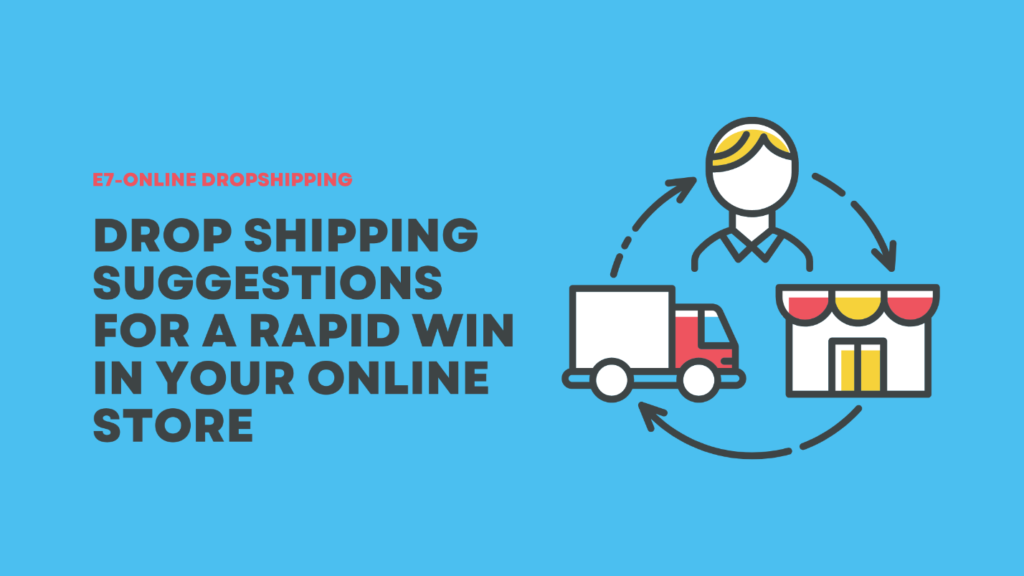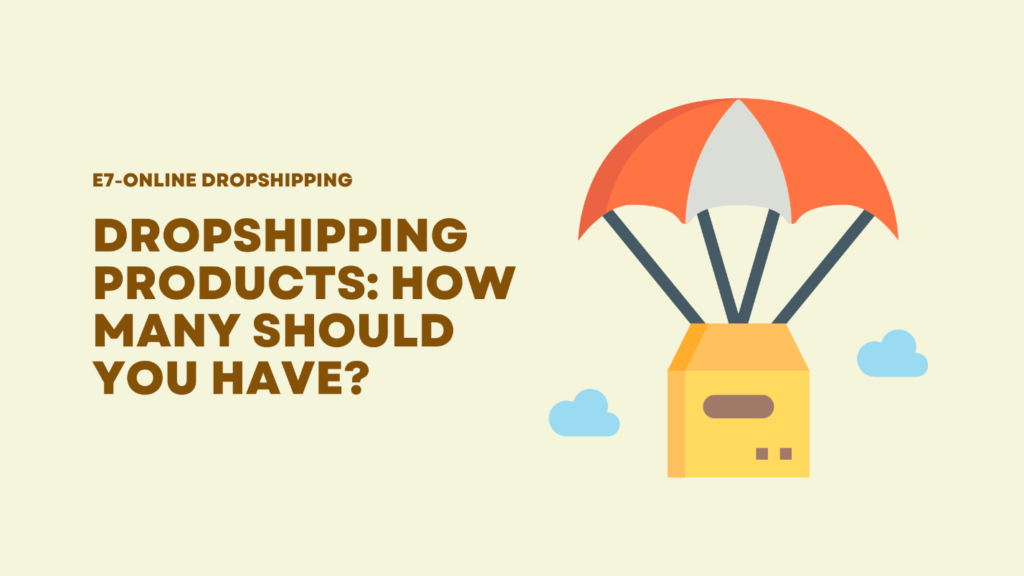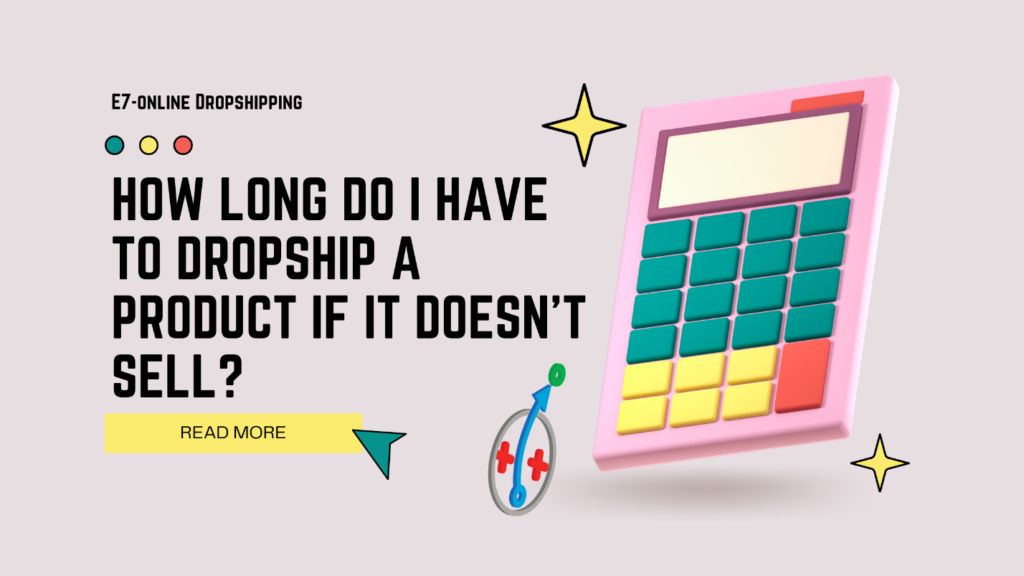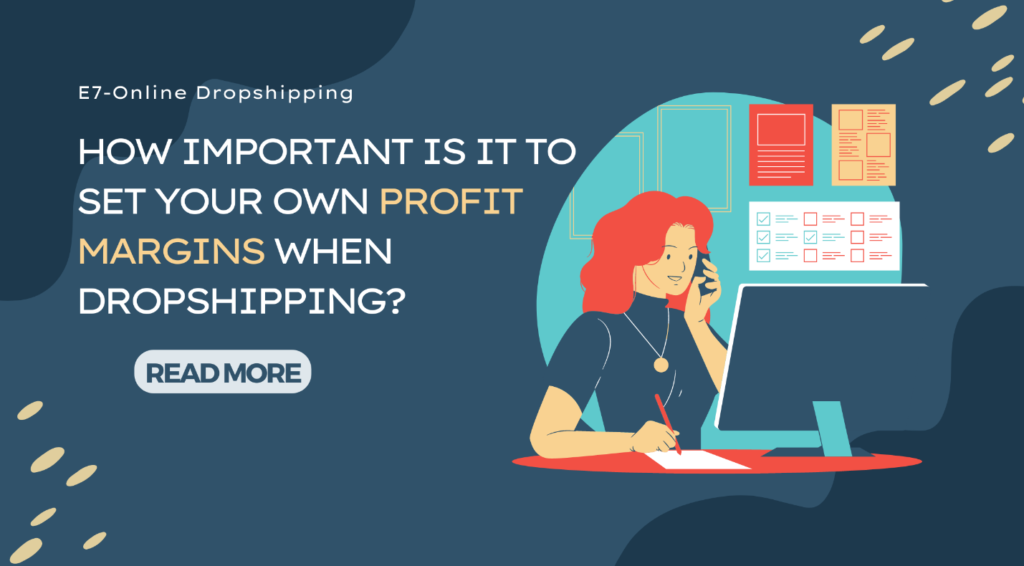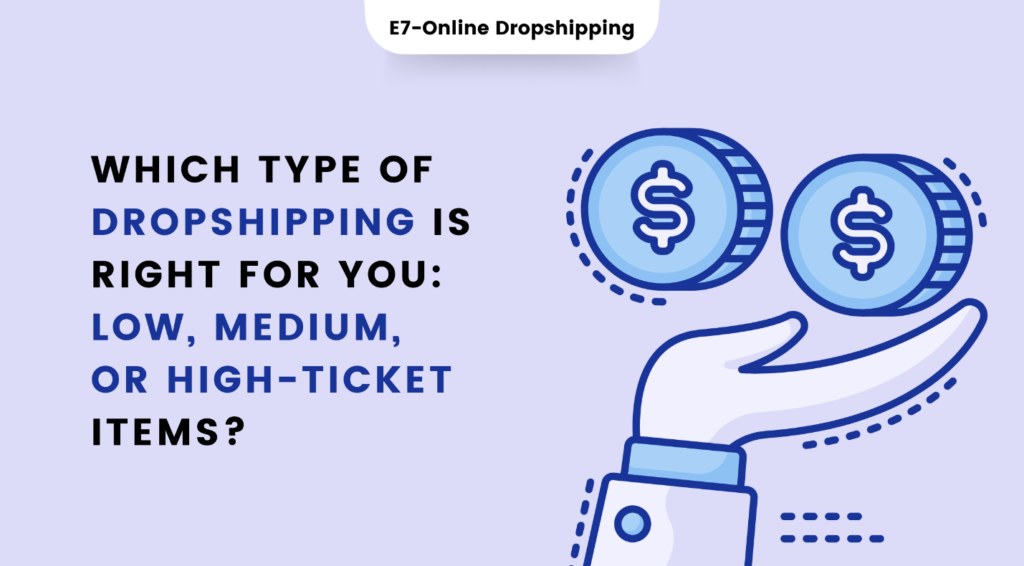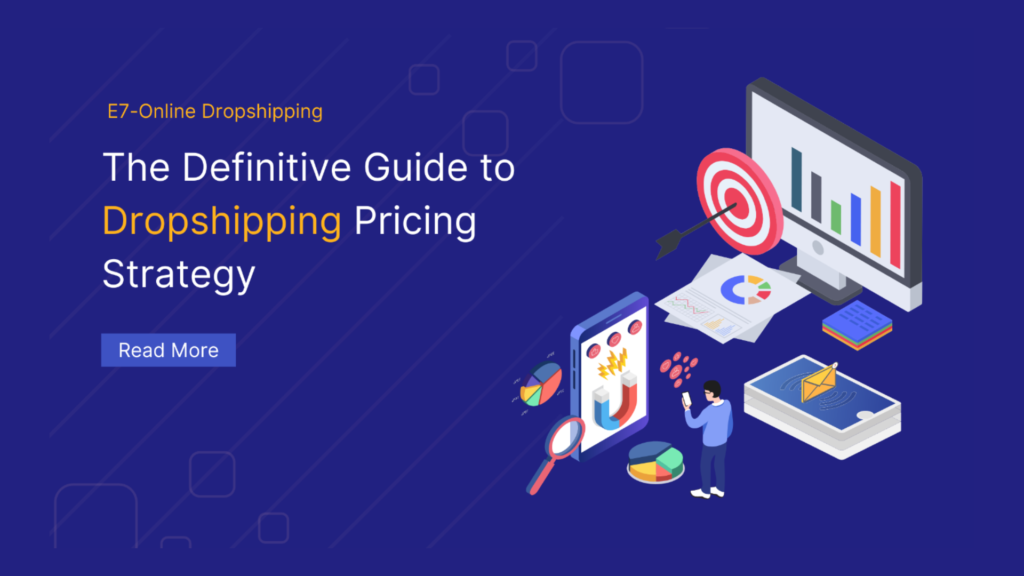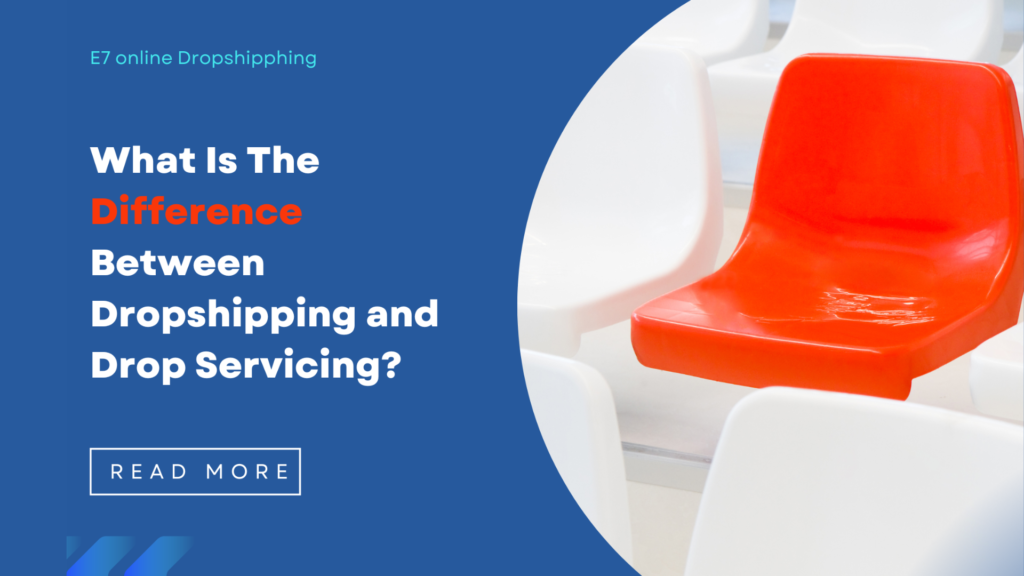Managing a dropshipping store entails a variety of responsibilities, including order processing, negotiating with delivery providers, and overseeing product advertising, to mention a few. All of these duties must be completed properly in order for your dropshipping business to thrive and earn significant revenues. However, in order to get the desired income, you must pay close attention to something equally important: profit margins.
Profit margins, in simple terms, are the financial gains made by your company. If they\’re high, you\’ll see an increase in revenue. If they\’re low, you\’ll obviously make less money. You must consider the wholesale price of the goods as charged by the supplier, the retail price you\’ve set, and any type of expenses you might incur, such as shipping fees, in order to build profit margins that are beneficial to your dropshipping store. We won\’t blame you if you get lost in all of this information if you\’re new to dropshipping. At first, calculating profit margins may appear difficult and perplexing.
That\’s why we\’ve put together this post to give you all the essential information you\’ll need to calculate your profit margins. We\’ll explain what a profit margin is and how to calculate it in the following sections of the article. However, we\’ll concentrate on the significance of creating your own profit margins and how this might affect your business.
What does the term \”dropshipping profit margin\” mean?
The profit margin on each item sold in your dropshipping store is referred to as the dropshipping profit margin. It\’s expressed as a percentage and indicates the exact amount of money you\’d get for each purchase your consumers make. As a result, it\’s critical to your business that you establish good profit margins for each of your products and review them on a regular basis to ensure that your store is on the correct track. After all, the financial health of your company determines its survival. The more successful your business is, the more success it will have.
You may figure out a product\’s dropshipping profit margin by multiplying the amount you paid for it by the retail price you\’re selling it for to your consumers. The formula is as follows:
(Retail price – Wholesale price) / Retail price x 100 = Profit Margin
When dropshipping, the profit margin is usually established at the time of importing your supplier\’s product catalog. So, let\’s pretend you\’re running a luxury clothes dropshipping business with E7DP as your supplier. Your consumer places an order for Jimmy Choo shoes, which E7DP fulfills automatically. After you\’ve placed your order, you\’ll be able to see how much money you\’ll make. The wholesale price of the shoes is €300, but the suggested retail price is €750. Using the calculation, €300 is removed from the retail price, leaving you with a profit of €450. You\’ll find your profit margin percentage by dividing that number by the retail price and multiplying by 100, which equals 60%. You can also use the profit margin formulae shown below to calculate other types of margins.
Why is it so important to set your own profit margins in your dropshipping business?
Profit margins are a set of factors that influence the financial health of your business. From the money you\’d make to the expenses you\’d have to pay to any financial difficulties you might face. Any dropshipper\’s inability and effectiveness in setting up a profitable pricing plan and regulating product expenses can result in adverse effects. As a result, defining your dropshipping profit margins based on your company\’s goals and aspirations is a crucial aspect to consider. We\’ve listed the primary reasons for taking your time while controlling your profit margins in the sections that follow.
Profit margins for dropshipping differ from one niche to the next
Profit margins in some niches, such as designer clothes, can range from 5% to 100%, and even up to 250 percent. It\’s vital to remember, however, that profit margins vary from one dropshipping firm to the next, based on the products being sold. To put it another way, various niches have varying profit margins. If a given profit margin brings in a lot of money for a dropshipper selling toys, it doesn\’t guarantee the same margin will do the same for a dropshipper selling sports equipment online.
Take a look at the profit margins of two dropshipping stores, one of which sells hygiene goods and the other of which specialized in luxury clothes. The former is recognized for having poor profit margins since the products they sell are actually cheap and have little value. These, on the other hand, would not work for the later store. High-end clothing has a reputation for being exceedingly expensive since it is extremely valuable, and as a result, it is one of the most profitable goods available. Dropshippers of branded clothing items, on the other hand, have the freedom to set large profit margins of up to 250 percent due to their products\’ international prominence and recognition.
Taking all of this into account, your profit margins are purely determined by the products you sell. As we\’ve seen, some dropshipping concepts, like as selling high-end items, generate more revenue than others. As a result, it\’s critical to take the time to define your own margins based on your estimated expenditures, income forecasts, as well as the value and popularity of your specialty.
Each product has a different profit margin for dropshipping
As we\’ve just seen, industries have vastly different profit margins based on the type of products they sell. The process of determining margins, however, does not end there. Profit margins vary even among products in the same niche. This is due to the fact that not every item will provide the same amount of profit. Some will result in substantial financial benefits, while others will hardly provide any revenue.
As a result, using the same profit margin for all of your products is not a good idea. You can distinguish between top-selling and low-selling items by setting a distinct margin for each of them. This allows you to keep track of product activity and, as a result, efficiently determine profit margins based on profitability. As a result, identifying product-specific margins is critical in order to benefit from higher sales. Even things that fall into the same category, such as shoes and sunglasses, which are considered accessories, can have varying margins, so don\’t set your margins too conservatively.
Keeping track of costs isn\’t as difficult as it formerly was
Expenses are an unavoidable component of any business. Shipping fees, advertising charges, supplier costs, as well as taxes, payroll, page upkeep, and so on, are all factors in the dropshipping industry. Some can be lowered, while others can\’t, but that doesn\’t mean they\’ll cause you irreversible problems. You\’ll be continuously confronted with unexpected costs because they can\’t be forecast, which is why knowing how to manage them is vital.
Profit margins will greatly assist you in keeping them throughout the process of dealing with a range of charges. You\’ll be able to easily assess your income as well as know exactly how much money each sale costs you once you\’ve set up all of your product margins. Calculating profit margins will show you how much money your dropshipping store has made while selling your products and will help you determine if you\’re following a cost-effective plan.
It\’s a lot easier to spot potential problems now
Dropshipping enterprises are constantly confronted with a variety of issues that may disrupt their operations and necessitate rapid action. It\’s sometimes best to act early and cut the problem off at the source rather than waiting for it to become uncontrollable. This is where profit margins come into play once more. Profit margins can help you detect difficulties that are more problematic than typical on time, particularly financial ones, in addition to assisting you in minimizing your outgoing costs.
Let\’s say you\’re setting profit margins for your dropshipping business and you find that your expenses are increasing quicker than your sales. This should alert you to the fact that you need to figure out what\’s causing your costs to rise and try to lower them. Profit margins assist you in assessing your company\’s development and stability. They also give you an overview of the factors that contribute to your store\’s performance as well as those that may have a negative impact on it and lead your business plan to go off the rails.
Taking everything into account
Working as a dropshipper requires a range of important responsibilities, one of which is ensuring that your store is in excellent financial standing and that your sales are meeting your income goals. Profit margins are an important component in determining your store\’s profitability and assisting you in maintaining your income. As a result, it\’s vital to spend work into setting your own profit margins in order to ensure that you\’ll continue to reach your profit goals.
For a variety of reasons, determining your product margins is critical for any dropshipping operation. To begin, stores have varied profit margins depending on the product market they belong to, as not every type of goods earns the same amount of money. Second, even within a niche, unique margins are required because some things will not sell as well as others. As a result, focusing on your most-purchased items is the ideal way to gain from high-profit ones. Finally, your profit margins will considerably aid you in managing your spending and spotting possible difficulties that could affect your firm. You\’ll notice gains not only in your sales but also in the general operation of your store if you examine all of these factors.

